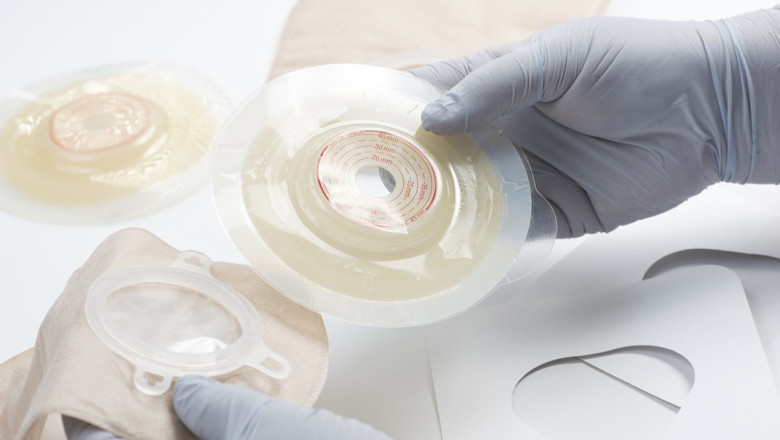views
The ostomy devices market is an essential and rapidly evolving segment within the broader medical device industry. These devices are vital for patients who have undergone ostomy surgery a procedure that creates an artificial opening (stoma) to divert bodily waste due to medical conditions such as colorectal cancer, inflammatory bowel disease, bladder cancer, and trauma. The increasing prevalence of such conditions, coupled with technological advancements and rising patient awareness, has fueled substantial growth and innovation in this market.
This article provides an overview of the ostomy devices market, explores key growth drivers, examines challenges, and highlights emerging trends shaping the sector’s future.
Market Overview
Ostomy devices primarily include ostomy pouches, skin barriers, adhesives, deodorants, and other accessories designed to manage waste collection and ensure patient comfort. These products are critical for enabling patients to maintain a good quality of life post-surgery.
Globally, the market has witnessed steady growth, driven by the increasing number of ostomy surgeries performed annually. According to global health data, colorectal cancer and inflammatory bowel diseases (IBD) are among the leading causes of ostomy procedures. This growing patient base necessitates reliable, efficient, and user-friendly ostomy management solutions.
North America and Europe currently dominate the market, attributable to advanced healthcare infrastructure, high healthcare spending, and greater patient awareness. However, emerging economies in the Asia-Pacific, Latin America, and Middle East & Africa are presenting significant growth opportunities due to rising healthcare investments, expanding surgical services, and increasing awareness of ostomy care.
Key Market Drivers
1. Rising Prevalence of Chronic Diseases
The global increase in chronic gastrointestinal diseases such as colorectal cancer and IBD is a primary driver of market growth. These conditions often require surgical interventions that result in the formation of a stoma, creating a steady demand for ostomy devices. Aging populations in developed countries further accentuate this trend, as older individuals are more susceptible to such diseases.
2. Technological Advancements and Product Innovation
Innovation has been a hallmark of the ostomy devices market in recent years. Traditional devices have evolved with improvements in adhesive materials, skin-friendly barriers, and pouch designs that enhance comfort and prevent leakage. Innovations like one-piece and two-piece systems, breathable skin barriers, and odor control technologies contribute to improved patient outcomes.
A noteworthy trend is the development of smart ostomy devices integrated with sensors to monitor output and detect complications. These digital health solutions enable remote patient monitoring and personalized care, aligning with the broader healthcare shift towards telemedicine.
3. Increasing Patient Awareness and Support Programs
Enhanced awareness about ostomy care has led to better patient acceptance and improved quality of life. Healthcare providers and manufacturers are investing in educational campaigns, support groups, and counseling services to help patients adjust post-surgery. This patient-centric approach encourages greater device usage compliance and drives market demand.
4. Expansion of Healthcare Infrastructure in Emerging Markets
Emerging economies are witnessing increased access to healthcare, improved surgical facilities, and expanding insurance coverage, facilitating higher rates of ostomy procedures and device adoption. Companies are introducing cost-effective products tailored for these markets to capitalize on the growing patient pool.
Market Challenges and Restraints
Despite positive growth indicators, the ostomy devices market faces certain challenges. The high cost of advanced ostomy products can limit access, particularly in developing regions. Additionally, social stigma and psychological issues related to living with an ostomy may hinder patient willingness to adopt these devices consistently.
Supply chain disruptions, regulatory complexities, and stringent reimbursement policies in various countries also pose challenges for manufacturers and distributors.
Emerging Trends
Digital Health Integration: The integration of IoT and wearable sensor technologies into ostomy devices represents a significant trend. Smart ostomy systems allow for real-time monitoring and data analytics, helping clinicians to detect complications early and optimize patient care.
Sustainability Focus: Environmental concerns are prompting manufacturers to explore biodegradable and recyclable materials for ostomy devices. Although still nascent, this eco-friendly approach is expected to grow as healthcare sustainability gains momentum.
Customization and Patient-Centric Designs: To enhance comfort and usability, manufacturers are offering customizable solutions tailored to the size, shape, and skin sensitivity of individual patients. This trend supports patient empowerment and improves adherence.
Competitive Landscape
The ostomy devices market is highly competitive, with several established multinational companies dominating the space. Key players include Coloplast, ConvaTec Group, Hollister Incorporated, and B. Braun Melsungen AG. These companies invest heavily in research and development to launch innovative products and expand their global footprint.
Mergers, acquisitions, and strategic partnerships are common as companies seek to enhance their technological capabilities and access emerging markets. Smaller specialized firms are also entering the market, focusing on niche innovations such as smart devices and sustainable materials.
Future Outlook
Looking ahead, the ostomy devices market is poised for continued growth, driven by the increasing prevalence of ostomy surgeries and ongoing technological advancements. The rising adoption of digital health solutions and expanding healthcare access in emerging economies are expected to create new growth avenues.
Manufacturers will likely focus on enhancing device comfort, functionality, and aesthetics to meet patient demands and reduce stigma. Regulatory alignment across geographies and evolving reimbursement policies will play a crucial role in market accessibility.
Conclusion
The ostomy devices market represents a critical component of the medical device industry, providing life-enhancing solutions for patients with complex medical needs. Fueled by rising disease incidence, technological innovation, growing patient awareness, and expanding healthcare infrastructure, the market is on a promising growth trajectory.






















Comments
0 comment